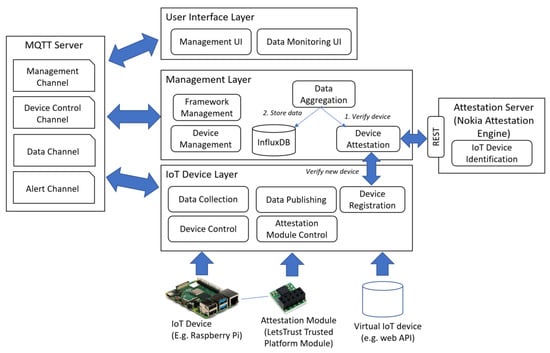Navigating the Regulatory Landscape: SEC Staking Regulations and Singapore's Compliance Deadline for Web3
Understanding the evolving framework of cryptocurrency regulations and their impact on global Web3 operations
As regulatory bodies worldwide tighten their oversight of cryptocurrency operations, stakeholders across the Web3 ecosystem face unprecedented compliance challenges. The SEC's evolving stance on staking activities and Singapore's approaching June 30 deadline represent critical regulatory milestones that will reshape the future of digital asset operations globally.
The Evolving Regulatory Framework for Crypto Staking
The Securities and Exchange Commission (SEC) has gradually refined its approach to cryptocurrency staking, creating a complex regulatory environment that continues to evolve. Understanding this framework is essential for all Web3 participants seeking to maintain compliance while continuing operations.
SEC's Current Stance on Crypto Staking
The SEC has increasingly scrutinized staking services, with particular attention to whether these activities constitute securities offerings. The core question revolves around whether staking represents an investment contract under the Howey Test, particularly when returns are promised and generated through the efforts of others rather than through pure protocol mechanics.
Key Regulatory Distinction:
The SEC distinguishes between:
- Staking as a Security: When a third party manages the staking process and promises returns, potentially triggering securities laws
- Staking as a Service: Technical facilitation of protocol participation without explicit promises of returns
This distinction has significant implications for operational structure, disclosure requirements, and legal exposure for staking providers. Companies offering staking services must carefully evaluate where their offerings fall on this spectrum.
Regulatory Evolution Timeline (2021-2023)
The SEC's approach to staking has evolved significantly over the past 24 months:
Key Enforcement Actions Shaping the Landscape
Several notable enforcement actions have established precedents for how staking services are regulated:
| Case | Date | Outcome | Regulatory Impact |
|---|---|---|---|
| Kraken Settlement | February 2023 | $30M settlement and staking service shutdown for US customers | Established that centralized staking programs with promised returns likely constitute securities |
| Coinbase Wells Notice | March 2023 | Warning of potential enforcement action related to staking services | Indicated broader application of securities framework to major exchange staking operations |
| BlockFi Settlement | February 2022 | $100M settlement for unregistered offering of interest-bearing accounts | Set precedent for yield-generating crypto products being classified as securities |
Regulatory Compliance Spectrum
The following diagram visualizes the spectrum of staking operations from most to least compliant under current SEC interpretations:
flowchart TD
A[Staking Operations] --> B[Fully Compliant]
A --> C[Gray Area]
A --> D[Non-Compliant]
B --> B1[Non-custodial, no promised returns]
B --> B2[Full securities registration]
B --> B3[Technical-only service without yield claims]
C --> C1[Custodial with variable returns]
C --> C2[Offshore operations serving US clients]
C --> C3[DeFi staking with governance token incentives]
D --> D1[Fixed return promises]
D --> D2[Unregistered securities offering]
D --> D3[Misrepresentation of risks]
style B fill:#c1f0c1,stroke:#0a0,stroke-width:2px
style C fill:#fff4c1,stroke:#f90,stroke-width:2px
style D fill:#f0c1c1,stroke:#d00,stroke-width:2px
As the regulatory landscape continues to evolve, staking providers must stay vigilant about enforcement trends and adapt their operational models accordingly. The increasing regulatory scrutiny has pushed many providers to reconsider their service offerings or seek formal registration pathways.
Organizations can leverage visual communication tools like AI-powered legal writing solutions to help translate complex regulatory requirements into clear guidance for stakeholders.
Singapore's June 30 Deadline: Implications and Requirements
While the SEC's approach continues to evolve gradually, Singapore has established a clear deadline of June 30 for cryptocurrency service providers to achieve regulatory compliance. This deadline represents a significant milestone in Singapore's comprehensive regulatory framework for digital assets.

Monetary Authority of Singapore (MAS) Requirements
The Monetary Authority of Singapore has established a comprehensive framework for digital asset service providers, with specific requirements for those offering staking services:
Licensing Requirements
- Digital Payment Token (DPT) Service License
- Capital requirements based on business volume
- Professional indemnity insurance
- Fit and proper person test for key executives
Operational Requirements
- Segregation of customer assets
- Risk disclosures for staking products
- Technology risk management framework
- Business continuity planning
Regulatory Timeline Leading to June 30
Singapore's approach to crypto regulation has evolved through several key phases:
timeline
title Singapore's Crypto Regulatory Evolution
2019 : Payment Services Act introduced
2020 : Digital Payment Token framework established
2021 : Initial licensing requirements announced
: First licenses granted to major exchanges
2022 : Enhanced AML/CFT guidelines published
: Consultation on staking and yield products
2023 : January: Final regulatory framework announced
: March: Transition period begins
: June 30: Compliance deadline
KYC/AML Considerations
Singapore has implemented particularly robust Know Your Customer (KYC) and Anti-Money Laundering (AML) requirements for crypto service providers, which include:
| Requirement | Description | Deadline Compliance |
|---|---|---|
| Customer Due Diligence | Enhanced verification for high-value transactions and politically exposed persons | Mandatory by June 30 |
| Transaction Monitoring | Automated systems to detect suspicious patterns and report to authorities | Mandatory by June 30 |
| Travel Rule Compliance | Information sharing for transfers above S$1,500, including originator and beneficiary details | Phased implementation |
| Risk Assessment | Documented methodology for assessing ML/TF risks of customers and services | Mandatory by June 30 |
Comparative Analysis: Singapore vs. Other Jurisdictions
How Singapore's regulatory approach compares to other major crypto hubs:
Compliance Checkpoints for Singapore Operations
Entities operating in Singapore must navigate these key compliance checkpoints:
flowchart TD
A[Start Compliance Process] --> B{Already Operating in Singapore?}
B -->|Yes| C[Apply for Transitional License]
B -->|No| D[Apply for Full License]
C --> E[Meet Capital Requirements]
D --> E
E --> F[Implement KYC/AML Systems]
F --> G[Develop Risk Management Framework]
G --> H[Establish Local Presence]
H --> I[Appoint Compliance Officer]
I --> J[Complete External Audit]
J --> K{All Requirements Met?}
K -->|Yes| L[Compliant by June 30]
K -->|No| M[Remediate Gaps]
M --> K
style L fill:#c1f0c1,stroke:#0a0,stroke-width:2px
style M fill:#f0c1c1,stroke:#d00,stroke-width:2px
Organizations facing these complex compliance requirements can benefit from visual communication tools to track progress and ensure all stakeholders understand the requirements. Creating clear SharePoint dashboards for compliance tracking can help teams collaborate effectively on regulatory projects.
Impact Assessment for Web3 Stakeholders
The dual regulatory developments from the SEC and Singapore's MAS will have far-reaching implications for different stakeholders in the Web3 ecosystem. Understanding these impacts is crucial for developing effective adaptation strategies.

For Staking Providers
Staking service providers face significant operational challenges as they adapt to new regulatory requirements:
Operational Adjustments
- Restructuring service offerings to avoid securities classification
- Implementing jurisdictional restrictions for certain products
- Establishing separate legal entities for different market segments
- Revising terms of service and user agreements
Technology Infrastructure Modifications
- Enhanced on-chain transaction monitoring systems
- Geo-fencing capabilities for restricted jurisdictions
- Automated compliance reporting tools
- Transparent staking reward calculation mechanisms
Cost Implications of Compliance
The financial impact of meeting regulatory requirements across jurisdictions:
Risk Assessment Framework
A structured approach to evaluating compliance risks for staking operations:
flowchart TD
A[Risk Assessment] --> B[Regulatory Risk]
A --> C[Operational Risk]
A --> D[Reputational Risk]
A --> E[Financial Risk]
B --> B1[Securities Classification]
B --> B2[Cross-Border Exposure]
B --> B3[Changing Requirements]
C --> C1[Technical Compliance]
C --> C2[Service Continuity]
C --> C3[Third-Party Dependencies]
D --> D1[Enforcement Actions]
D --> D2[Customer Trust]
D --> D3[Industry Standing]
E --> E1[Compliance Costs]
E --> E2[Revenue Impact]
E --> E3[Capital Requirements]
For Investors and Token Holders
Individual participants in staking ecosystems will also face changes to their experience:
Changes to Staking Rewards
- Potential reduction in yields due to compliance costs
- More variable returns as fixed-yield models are restructured
- Tiered access based on investor accreditation status
- Increased transparency in reward calculation methodologies
New Disclosure Requirements
- Expanded risk disclosures before participation
- More detailed reporting on validator performance
- Clearer separation between protocol rewards and service fees
- Jurisdiction-specific terms and conditions
Decision Tree for Evaluating Staking Opportunities
A structured approach for investors to assess compliant staking options:
flowchart TD
A[Evaluate Staking Opportunity] --> B{Is provider licensed in your jurisdiction?}
B -->|Yes| C{Does service offer fixed returns?}
B -->|No| D[Higher Regulatory Risk]
C -->|Yes| E[Potential Securities Classification]
C -->|No| F{Is staking non-custodial?}
F -->|Yes| G[Lower Regulatory Risk]
F -->|No| H{Does provider have strong compliance history?}
H -->|Yes| I[Moderate Regulatory Risk]
H -->|No| J[Higher Regulatory Risk]
style D fill:#f0c1c1,stroke:#d00,stroke-width:2px
style E fill:#fff4c1,stroke:#f90,stroke-width:2px
style G fill:#c1f0c1,stroke:#0a0,stroke-width:2px
style I fill:#fff4c1,stroke:#f90,stroke-width:2px
style J fill:#f0c1c1,stroke:#d00,stroke-width:2px
Investors navigating this complex landscape may benefit from structured approaches to evaluating opportunities and tracking performance. Creating detailed performance review frameworks can help maintain visibility across different staking positions.
Compliance Technology Solutions and Strategies
As regulatory requirements grow more complex, technological solutions are emerging to help Web3 participants navigate compliance challenges efficiently. These RegTech innovations are becoming essential components of sustainable staking operations.

Emerging RegTech Solutions
Automated Compliance Monitoring
Real-time transaction screening against regulatory requirements with automated flagging of suspicious activities.
- • Multi-jurisdictional rule engines
- • Behavioral analytics
- • Anomaly detection
Digital Identity Solutions
Advanced KYC/AML platforms with blockchain-based verification and portable identity credentials.
- • Biometric verification
- • Document authentication
- • Ongoing monitoring
Regulatory Reporting Automation
Streamlined generation of compliance reports for multiple regulatory bodies with audit trails.
- • Template-based reporting
- • Cross-jurisdictional mapping
- • Automatic data aggregation
On-Chain Compliance Verification
Innovative approaches are emerging to embed compliance directly into blockchain protocols:
The following diagram illustrates how on-chain compliance verification can be implemented:
flowchart LR
A[User] --> B[Compliance Oracle]
B --> C{Verification Check}
C -->|Approved| D[Smart Contract]
C -->|Rejected| E[Transaction Blocked]
D --> F[Staking Pool]
F --> G[Validator Network]
B <--> H[(Compliance Database)]
B <--> I[Regulatory API]
style B fill:#f8d7da,stroke:#dc3545,stroke-width:2px
style C fill:#fff3cd,stroke:#ffc107,stroke-width:2px
style D fill:#d1e7dd,stroke:#198754,stroke-width:2px
style E fill:#f8d7da,stroke:#dc3545,stroke-width:2px
These on-chain mechanisms enable automated compliance without compromising the decentralized nature of blockchain systems, creating a balance between regulatory requirements and Web3 principles.
Cross-Border Compliance Management
Managing compliance across multiple jurisdictions requires sophisticated systems:
Visual Compliance Dashboards
Effective compliance management requires clear visualization of complex regulatory requirements. PageOn.ai offers powerful tools for creating interactive compliance dashboards that help teams track regulatory status across multiple jurisdictions.
These dashboards enable organizations to:
- Track compliance status across multiple jurisdictions in real-time
- Visualize regulatory deadlines and implementation timelines
- Monitor key risk indicators with automated alerts
- Generate comprehensive reports for management and regulators
- Create scenario planning visualizations for upcoming regulatory changes
By transforming complex regulatory requirements into clear visual frameworks, PageOn.ai helps organizations maintain compliance while reducing the operational burden of monitoring multiple regulatory regimes.
Organizations can enhance their compliance communication strategies through effective presentation techniques that clearly convey regulatory requirements to stakeholders.
Case Studies: Adaptation to New Regulatory Frameworks
Examining how organizations have navigated similar regulatory transitions provides valuable insights for those currently adapting to SEC and Singapore's requirements.

Major Platform Compliance Strategies
Case Study: Alpha Exchange
Challenge: Restructuring staking services following SEC scrutiny
Approach: Shifted from custodial staking with fixed returns to a non-custodial staking infrastructure service with transparent fee structure.
Result: Maintained 85% of staking volume while achieving regulatory compliance; experienced 3-month implementation period with $2.5M compliance investment.
Key Learning: Early engagement with regulators and transparent customer communication minimized disruption.
Case Study: Beta Protocol
Challenge: Adapting DeFi staking protocol to Singapore's regulatory requirements
Approach: Implemented on-chain compliance verification, geo-restrictions, and established a legal entity in Singapore for licensing.
Result: First DeFi protocol to receive provisional approval under Singapore's framework; compliance costs offset by increased institutional participation.
Key Learning: Proactive compliance became a competitive advantage for attracting institutional capital.
Success Stories: Effective Regulatory Navigation
The timeline below illustrates the adaptation journey of Gamma Staking, which successfully navigated regulatory changes:
timeline
title Gamma Staking's Regulatory Adaptation Journey
2022-01 : Regulatory analysis initiated
2022-03 : Compliance gap assessment completed
: Legal restructuring begins
2022-05 : Product redesign launched
2022-07 : Technology infrastructure updated
: Regulatory engagement initiated
2022-09 : Beta testing of compliant platform
2022-11 : Full compliance achieved
2023-01 : New markets entered with compliant offering
Key success factors from Gamma Staking's experience included:
- Early recognition of regulatory trends and proactive planning
- Comprehensive approach covering legal, product, and technology aspects
- Transparent communication with users throughout the transition
- Engagement with regulators to shape interpretation of requirements
- Investment in compliance as a competitive differentiator
Cautionary Tales: Consequences of Non-Compliance
The financial and operational impact of non-compliance can be severe:
Common factors in non-compliance cases included:
- Underestimation of regulatory timeline and scope
- Insufficient investment in compliance infrastructure
- Lack of cross-jurisdictional regulatory expertise
- Failure to engage with regulators proactively
- Inadequate customer communication during transitions
These case studies highlight the importance of proactive compliance planning and the potential for innovative companies to turn regulatory challenges into market opportunities through thoughtful adaptation. Organizations can learn from these experiences by studying how other platforms have adapted to regulatory changes in similar contexts.
Future Outlook: The Post-Deadline Regulatory Landscape
As the industry adapts to current regulatory requirements, forward-looking organizations are already anticipating the next phase of regulatory evolution. Understanding potential future developments will help stakeholders prepare strategically.

Post-Deadline Regulatory Developments
Enforcement Phase
Following Singapore's June 30 deadline, expect a period of active enforcement against non-compliant entities to establish credibility of the framework.
Likely timeframe: Q3-Q4 2023
Framework Refinement
Regulatory frameworks will likely be refined based on implementation feedback, addressing practical challenges identified during initial compliance.
Likely timeframe: Q1-Q2 2024
Global Harmonization
Increased coordination between major regulatory bodies to harmonize approaches to staking, reducing compliance complexity for global operators.
Likely timeframe: 2024-2025
Potential Harmonization Between SEC and Global Regulations
The following diagram illustrates potential paths toward regulatory harmonization:
flowchart TD
A[Current Regulatory Fragmentation] --> B[Bilateral Agreements]
A --> C[Industry Standards Development]
A --> D[International Regulatory Forums]
B --> E[Partial Harmonization]
C --> E
D --> E
E --> F[Global Staking Framework]
F --> G[Common Disclosure Standards]
F --> H[Unified Risk Assessment]
F --> I[Interoperable Compliance]
F --> J[Regulatory Passporting]
While complete harmonization is unlikely in the near term, incremental progress toward common standards is expected, particularly in areas such as:
- Standardized disclosure requirements for staking services
- Common approaches to customer asset protection
- Shared principles for distinguishing securities from non-securities in staking
- Coordinated enforcement against clearly non-compliant actors
Emerging Regulatory Trends for DeFi and Non-Custodial Staking
The regulatory approach to various staking models is likely to evolve in different directions:
Creating Scenario Planning Visualizations
As the regulatory landscape continues to evolve, organizations need effective tools for scenario planning. PageOn.ai enables teams to create visual scenario maps that help prepare for various regulatory outcomes.

With PageOn.ai's visualization tools, organizations can:
- Map potential regulatory scenarios with probability assessments
- Visualize decision trees for response strategies to each scenario
- Create impact matrices showing business implications of regulatory changes
- Develop visual timelines for implementation of compliance measures
- Share interactive scenario plans with stakeholders for collaborative planning
By transforming complex regulatory futures into clear visual expressions, PageOn.ai helps organizations prepare strategically for the evolving compliance landscape.
Transform Your Regulatory Compliance Visualization with PageOn.ai
Navigate complex regulatory requirements with clarity and confidence. PageOn.ai's powerful visualization tools help you create stunning visual expressions that transform intricate compliance frameworks into clear, actionable insights for your team.
Navigating the Future of Staking Regulation
As the regulatory landscape for cryptocurrency staking continues to evolve, organizations face both challenges and opportunities. The SEC's approach to staking and Singapore's June 30 deadline represent significant milestones in this evolution, but they are unlikely to be the final word.
Forward-thinking organizations will:
- Develop adaptive compliance frameworks that can evolve with changing requirements
- Invest in technology solutions that streamline compliance processes
- Engage proactively with regulators to shape the interpretation of requirements
- Communicate transparently with customers about regulatory changes
- Monitor global regulatory developments to anticipate future trends
By approaching regulatory compliance as a strategic opportunity rather than merely a cost center, Web3 organizations can build sustainable operations that thrive even in an increasingly regulated environment.
The key to success will be clear communication of complex requirements across all stakeholders. PageOn.ai's visualization tools provide a powerful platform for transforming regulatory complexity into clear, actionable insights that drive compliant operations while maintaining the innovative spirit of Web3.
You Might Also Like
How to Design Science Lesson Plans That Captivate Students
Create science lesson plans that captivate students with hands-on activities, clear objectives, and real-world applications to foster curiosity and critical thinking.
How to Write a Scientific Review Article Step by Step
Learn how to write a review article in science step by step. Define research questions, synthesize findings, and structure your article for clarity and impact.
How to Write a Self-Performance Review with Practical Examples
Learn how to write a self-performance review with examples and tips. Use an employee performance review work self evaluation sample essay to guide your process.
How to Write a Spec Sheet Like a Pro? [+Templates]
Learn how to create a professional spec sheet with key components, step-by-step guidance, and free templates to ensure clarity and accuracy.
